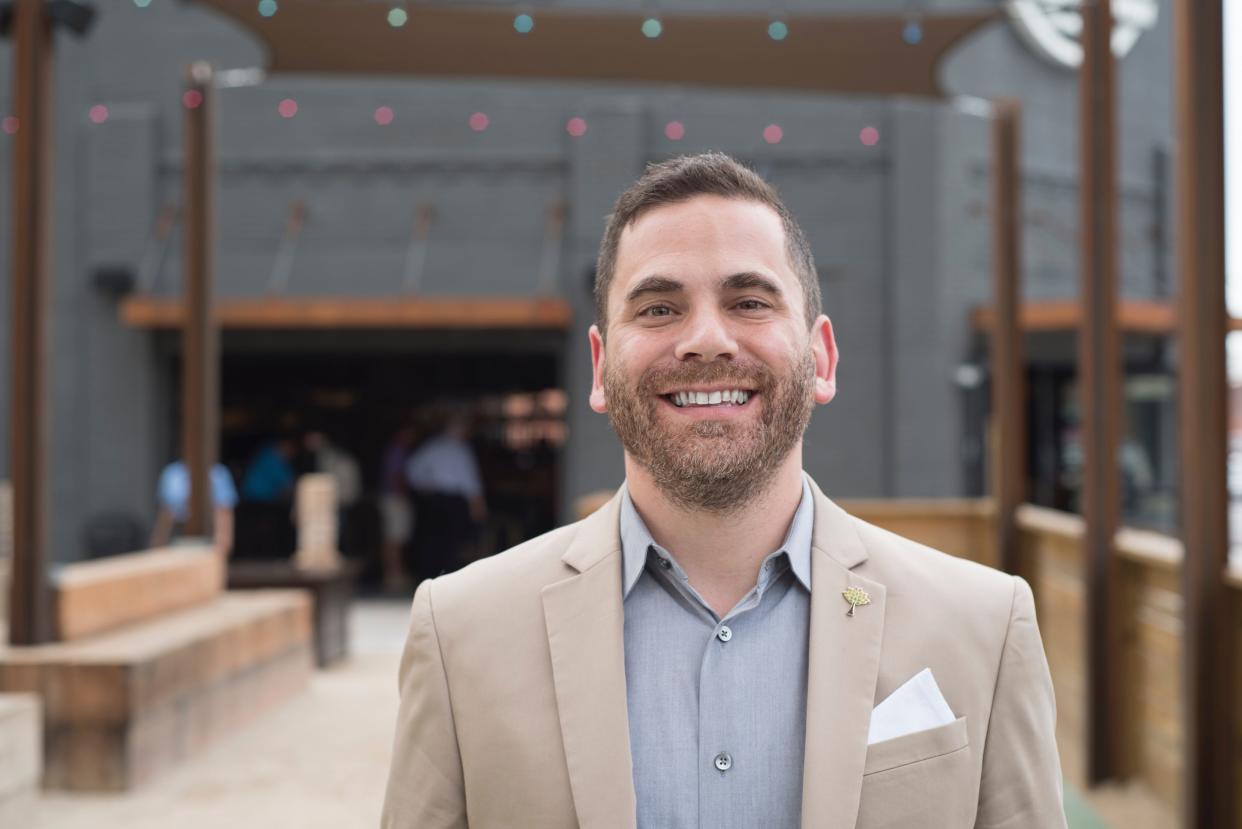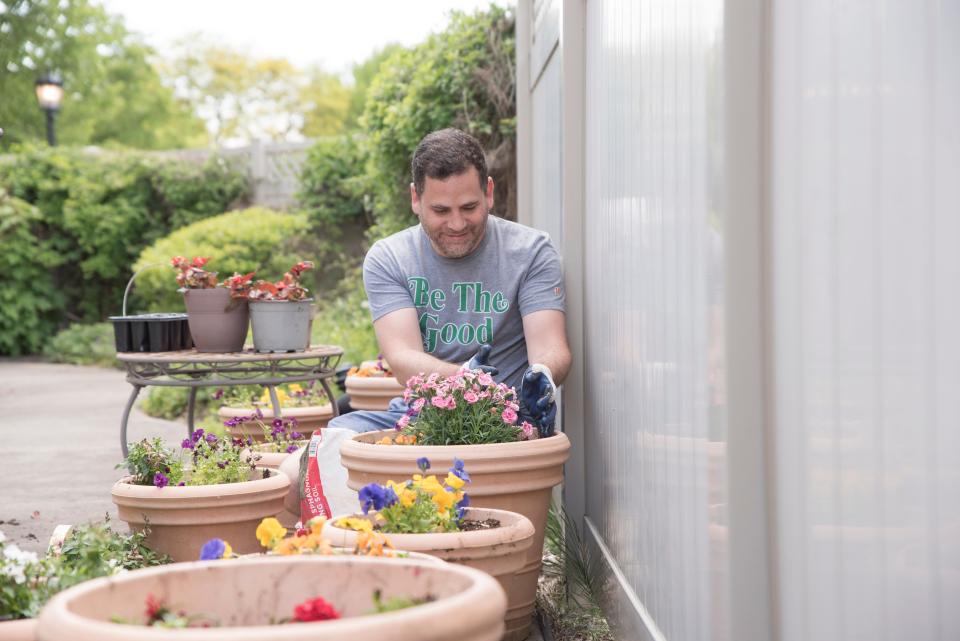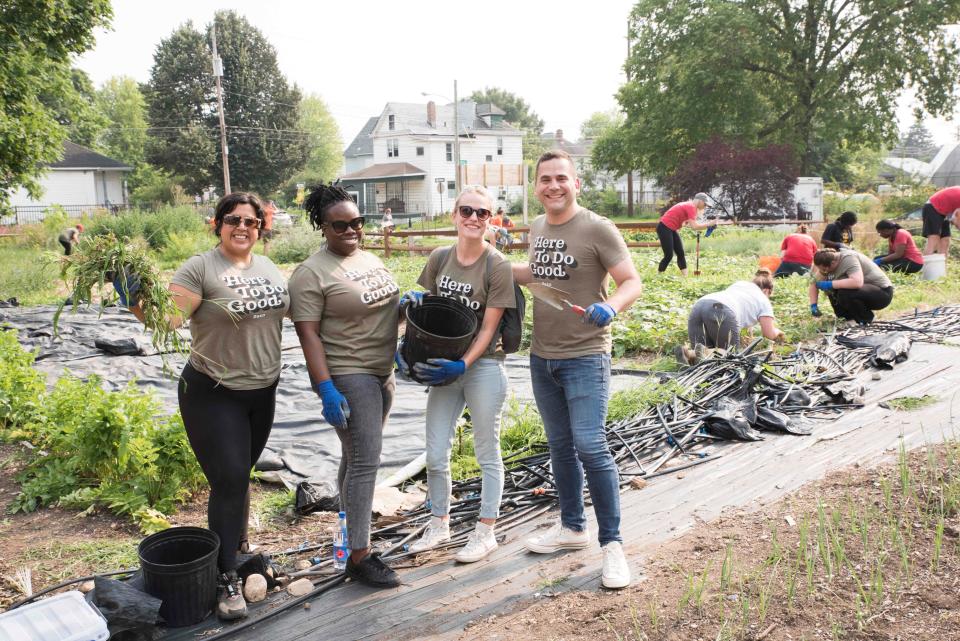Q&A | 6 questions with Besa CEO Matthew Goldstein on 10 years of impact

A little more than 10 years ago, Matthew Goldstein was working in marketing at Abercrombie & Fitch, volunteering for a suicide hotline on the weekends and searching for more.
Today he’s the CEO and founder of Columbus nonprofit Besa.
Besa connects those interested to volunteer opportunities through an online platform and is celebrating its 10-year anniversary this year, having put 60,000 volunteers to work, completed 10,000 projects and helped more than 150 nonprofit organizations.
Besa’s budget and staff members both have doubled in the past year.
Outreach that clicks:Nonprofit attracts young adults to fill volunteer roles
Goldstein, 42, who is up for Columbus CEO Magazine’s Nonprofit CEO of the Year, sat down with The Dispatch to talk about the past decade, the future and whether he ever expected Besa would have the impact on the local community that it has.
The discussion occurred as Besa’s Wish program was working to offer gifts for more than 2,000 seniors in need for Christmas. His responses have been edited for length and clarity.
For people who don't know, what is Besa?
Besa is a Columbus-based nonprofit. Everything we do is civic engagement.
So what I mean by that is how to make it easy for people to learn about needs in this community through the lens of civic engagement and then activate within those needs. We launched in 2012; we had something like 56 volunteers give back a couple 100 hours of service. And as you know, it's grown tremendously over those years.
(Now) it's tens of thousands of volunteers, 160,000 or 170,000 hours of service, 10,000-plus service projects.
NCAA:Coaches in town for Final Four give back by volunteering
But really what it comes down to is, in this world, where there are many challenges, ... we believe the best way to address those challenges is by making it possible for people to plug in to learn about their community and to do good in their community. That's what we do.
You talked about a yearning for connection that you felt and wanting to contribute to the community and be a part of it. Do you think that was part of the reason you started Besa, because you wanted to help other people forge that same connection?
Definitely. I mean, it starts with me, right? I wanted to forge that connection, and then as soon as I started to forge that connection with other employees, associates, my colleagues at Abercrombie, I realized it's not just me. There are a lot of people out there that want to connect.
I remember talking to one employee who said he wanted to get involved. He was working a lot of hours, and he wanted to do something in the community related to children and hunger. And he went to Google, and he typed in children and hunger. … And this is when “The Hunger Games” was out. And so the Google results were all about the movie and the showtimes.
And then on page 2 or 3, he found Children's Hunger Alliance and the food bank at the time and other places, and he reached out and he just wasn't making the connection that he wanted to. And he finally threw up his hands and said, "I don't have time for this."

And so that's a missed opportunity, right? That is someone who has energy that they wanted to invest in the community, but they couldn't figure out how to navigate and get in, get connected in a way that felt right to them. And so that was a missed opportunity. And so that really resonated with me because I knew he wasn't the only one. I was one of those people, too. And that's what we tried to make happen — are those unique, individual powerful experiences between individuals and their community.
Tell me about how the past few years of Besa have been and the growth that you guys have seen, especially on the heels of the pandemic.
Pre-pandemic, we launched our first capital campaign to raise a million dollars to really advance Besa and take it to its next level. And that wrapped up in 2020, which is a wild year to wrap up. ...
Adopt a senior:Holiday gift-giving program for elderly carries added resonance amid coronavirus pandemic
But what's incredible is if we didn't do that campaign, we would not have been positioned as well as we were to respond to the community in 2020, 2021 and 2022. That campaign allowed us to invest in our infrastructure so that we could better meet the needs of the community.
So during the height of the pandemic, we got 12,000 volunteers to the front line.
You've doubled your budget and your staff in the past year. So tell me about how that growth has happened. Was it in response to a need in the community?
So our budget in 2021 was $1 million. This year, it's close to $2 million. And so it's nearly double. And, like you said, our team has more than doubled in one year. And that is in response to a need.
Everyday Heroes:Kari Nowiski gives 430 hours of community service to the Columbus area through Besa
We're really grateful. We've never done this work with our city, with government officials, with the city and/or the county. … If we're going to be as effective as we want to be, we need our government partners at the table with us. ...
They made investments in Besa, both the city and the county. ... That allowed us to grow our team to better meet the needs of this community. That means that we're able to show up in more neighborhoods; we're able to go deeper with nonprofits; we're able to build up relationships with new nonprofits.
What's next for Besa?
One is to breathe. I mean, there's been tremendous growth this year, and I am so proud of my team and how they've shown up. But it's been a lot; it's been a lot of good. But with the growth, you know, there are pain points. And so we're working on those internally so that we can continue to improve processes so that we can continue to show up as effectively as possible for this community.
That's the short term. Long term is how to do more of this work. Like I said earlier, I think we've had a lot of success in Columbus and in central Ohio. But there's more work to be done...

So how do we continue to diversify our volunteer base to ensure that they are reflective of the communities that we serve and that we are in as many communities as possible here in central Ohio?
There's also a desire to take Besa across the country.
This year, we did a pilot with five of our corporate partners to do programming in other communities. And I think we're gonna continue to do that in 2023 and beyond.
Is there anything else ... you want people to know what you know, what you want them to know about what you do?
I think the biggest thing is, what we do is make it possible, easier for people to connect with their community. And so if there are people reading this article that are looking for ways to connect with their community, I encourage them to go to our website, to reach out to us. All we want is for more people to have an opportunity to engage in their community.
dking@dispatch.com
@DanaeKing
Besa by the numbers
10 years old
$2 million annual budget
16 staff members
30 companies as partners
42% of staff are diverse (people of color and/or part of LGBTQIA community)
$50 million in community impact
150 nonprofits helped
10,000 completed projects
60,000 volunteers
148,000 (and counting) volunteer hours donated
This article originally appeared on The Columbus Dispatch: CEO Q&A | In 10 years, Besa has mobilized 60,000 volunteers

